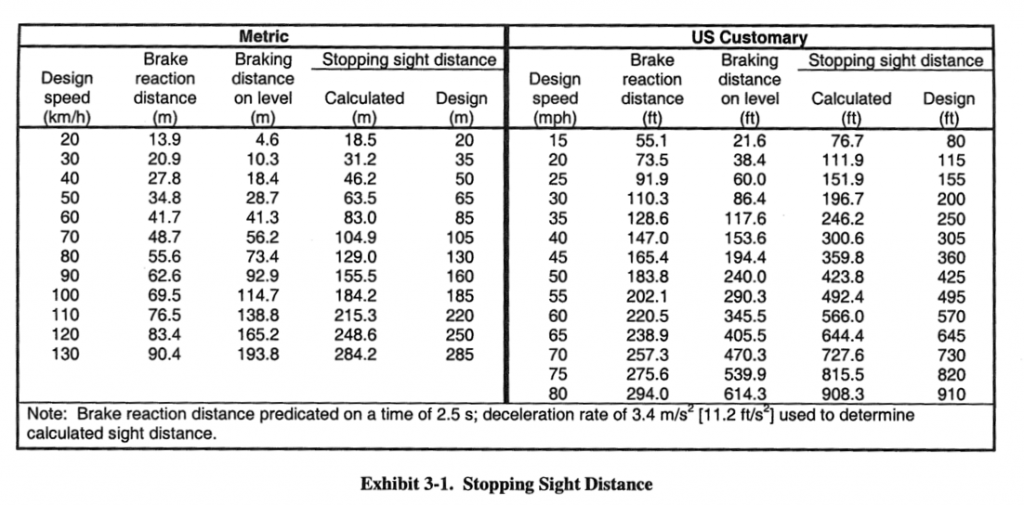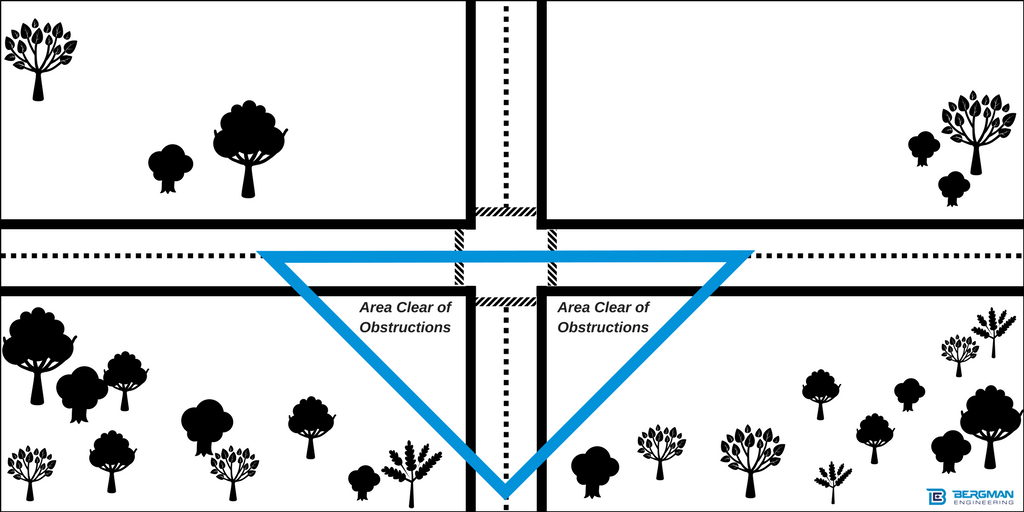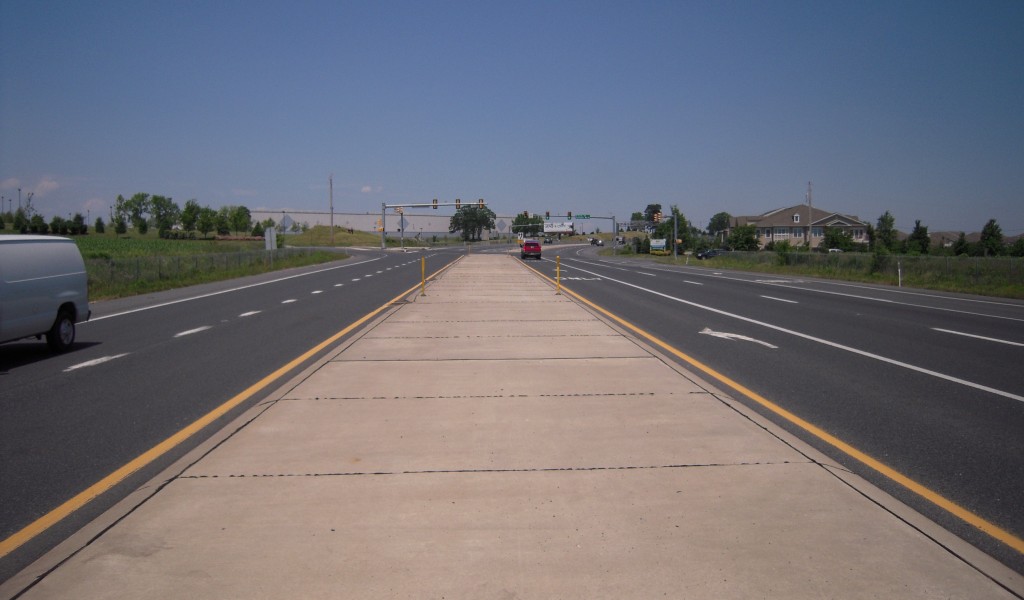Sight Distance; it can save lives, but what is it?
Sight distance is the length of a roadway visible to a driver, pedestrian or cyclist. During planning, it is the traffic engineer’s responsibility to design the roadway with sufficient sight distance to allow for an individual to maintain control their vehicle: in the event of an unexpected object in their traveled way, while bringing the vehicle to a controlled stop. According to the American Association of State Highway and Transportation Officials’ A Policy on Geometric Design of Highway and Streets, there are three types of sight distance used in roadway design:
1. Stopping Sight Distance – The driver should have a sufficient view of the road ahead to allow for a complete stop in the event of an unforeseen hazard. This chart from AASHTO’s A Policy on Geometric Design of Highway and Streets can be used to determine how to calculate stopping sight distance based on the road’s speed limit and distance required for braking. 
2. Intersection Sight Distance – The driver of a vehicle approaching/departing an intersection or driveway should have an unobstructed view in both directions. This visual creates a sight triangle.
3. Passing Sight Distance – When a driver looks to pass another motorist, the passing driver should be able to see a sufficient distance ahead to determine whether it is safe to maneuver passing or turning without cutting off another vehicle.
Accounting for appropriate and reasonable sight distance is one of the ways way to improve the safety of roadways and for roadway users. It is then up to motorists, cyclists and pedestrians to adhere to the traffic controls and exercise care in observing and yielding to avoid potential conflicts.








